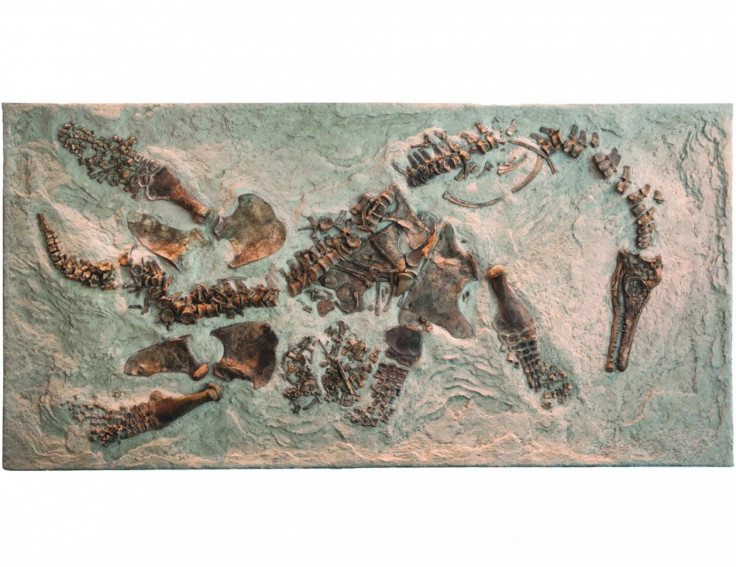Pregnant Plesiosaur Fossil Suggests Ancient Sea Monster Carried Young like a Mammal

In a groundbreaking new study, scientists have found the first evidence that giant sea reptiles living at the same time as the dinosaurs gave birth to, and perhaps nurtured, a single live young.
F. Robin O'Keefe, a paleontologist at Marshall University in Huntington, W.Va., and Luise Chiappe, director of the Dinosaur Institute at the Natural History Museum in Los Angeles, found that plesiosaurs - giant marine reptiles that ruled the oceans 75 million years ago - gave birth to single large babies and may have even reared their young.
"This is one of the fossils that when I first walked up to it, I got that charge again because that's a one in a million fossil. This is really phenomenal. It's really cool and it's the first pregnant plesiosaur that's ever been found after almost 200 years of looking, so it's a spectacular fossil that's really unique and that's really cool," O'Keefe told West Virginia Public Broadcasting.
The scientists studied a 16.5-foot (5m) fossil skeleton that was excavated from a ranch in northwest Kansas. Discovered by amateur paleontologists Marion and Charles Bonner while hiking, the pair noticed flat bones sticking out of the shale. These turned out to be the mother plesiosaur's pelvis. As they continued to dig, they found the creature's flippers, ribs, hips, spinal column, and part of its neck.
The Polycotylus latippinus lay in the basement of the Lost Angeles museum waiting to be chiseled away from its rocky casing for over two decades. Finally, in 2008, Chiappe invited O'Keefe to come look at the specimen before showcasing it as part of the Los Angeles museum's new Dinosaur Hall.
When researchers began to piece together the bones, they realized that not only were they dealing with an adult plesiosaur, but a smaller juvenile as well.
The authors of the report argue that because the tiny bones were soft, immature, and showed no signs of bite marks, it suggests that the animal was just two-thirds of the way through its development.
A flat seashell-shaped bone - part of the fetus' pelvis - rests on the inside face of the mother's shoulder bone, indicating that the baby was growing inside its mother when she died.
Scientists have speculated about how these colossal animals reproduced for years. Many believed that the creatures were simply too large and cumbersome to drag themselves out of the water to a beach to lay eggs.
"The lack of fossil evidence of a pregnant plesiosaur was frustrating," explained O'Keefe, the lead author of the study.
The study, published in Science, suggests a degree of parental care as well.
"It's got a single fetus inside of it instead of a bunch and that fetus is really big particularly for how immature it is. I think that's the real scientific kernel of the paper and why it's important. Other marine reptiles during the age of dinosaurs were known to give live birth, that's not that unusual, but what is unusual is giving birth to one big baby instead of a bunch of little babies," O'Keefe said.
Other species that birth single large babies - such as humans, whales, dolphins and some Australian lizards - form social groups to help protect their young against predators.
While scientists have made the leap, suggesting that this means the animal was very social, O'Keefe cautions:
"When you get right down to it, behavior doesn't fossilize."
The plesiosaur fossil is now on display at the Los Angeles Natural History Museum's Dinosaur Hall, which opened July 16.
© Copyright IBTimes 2025. All rights reserved.





















